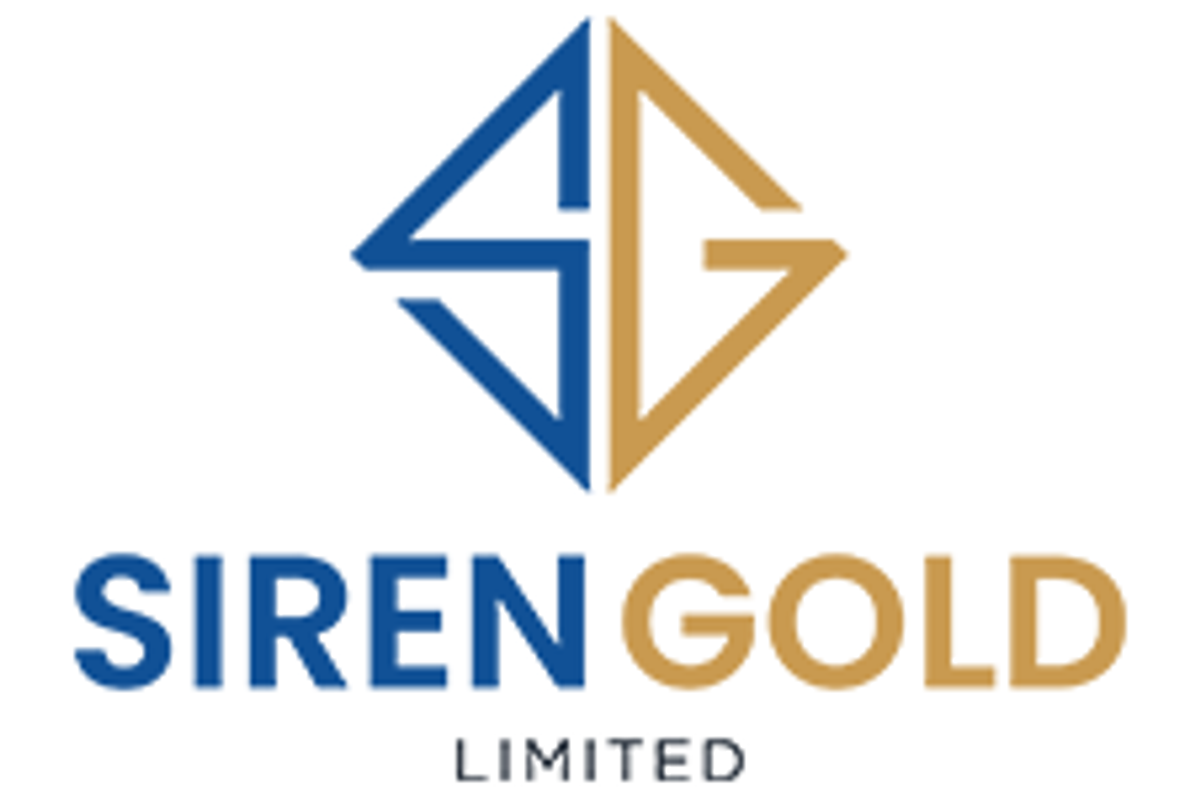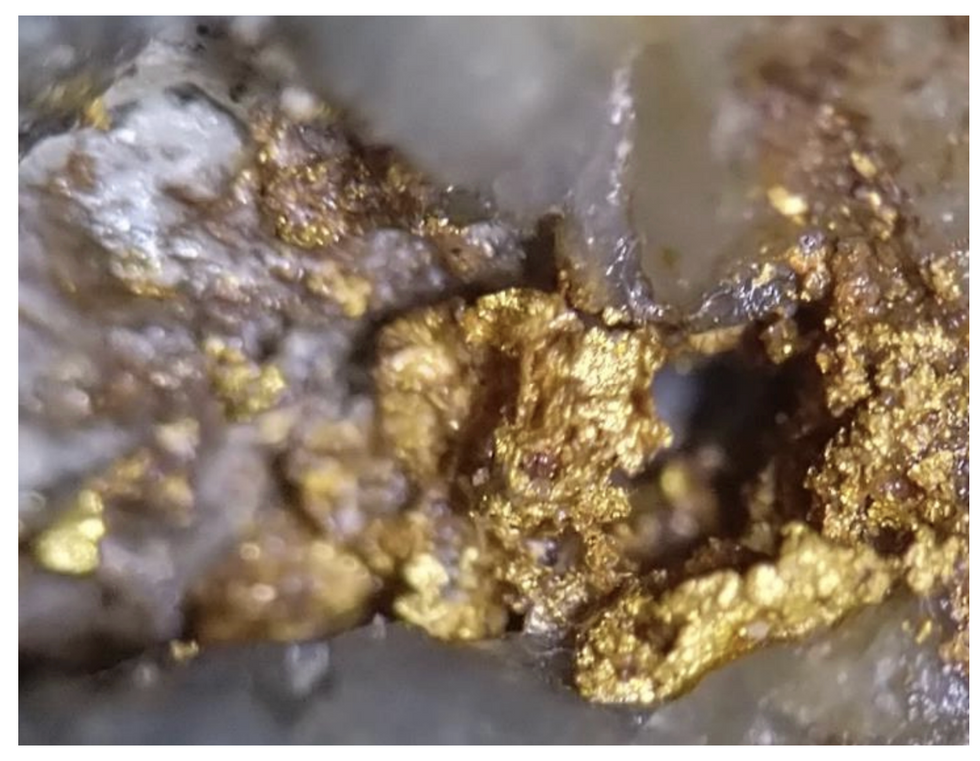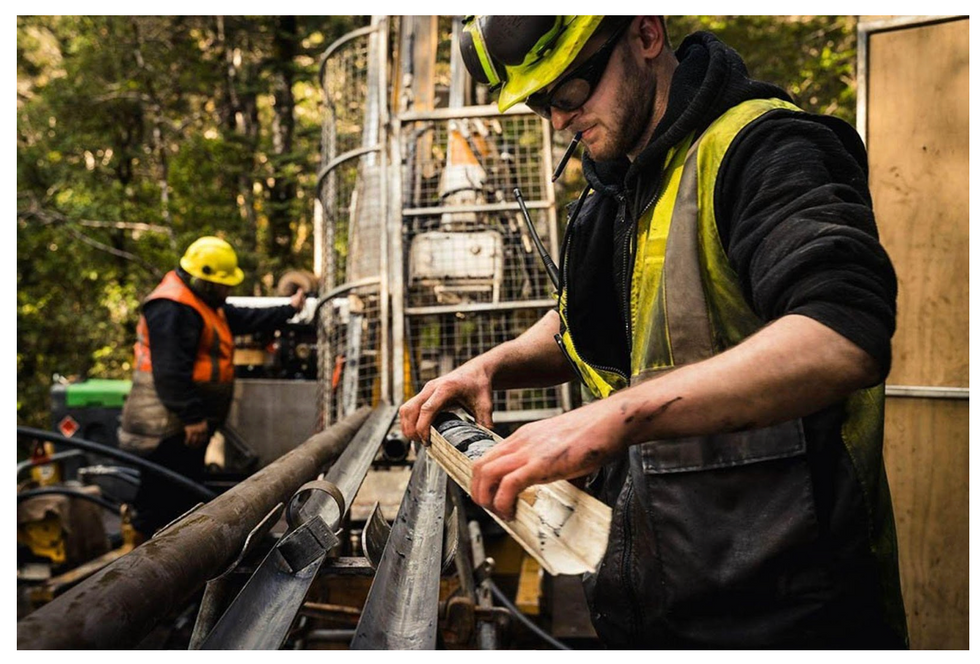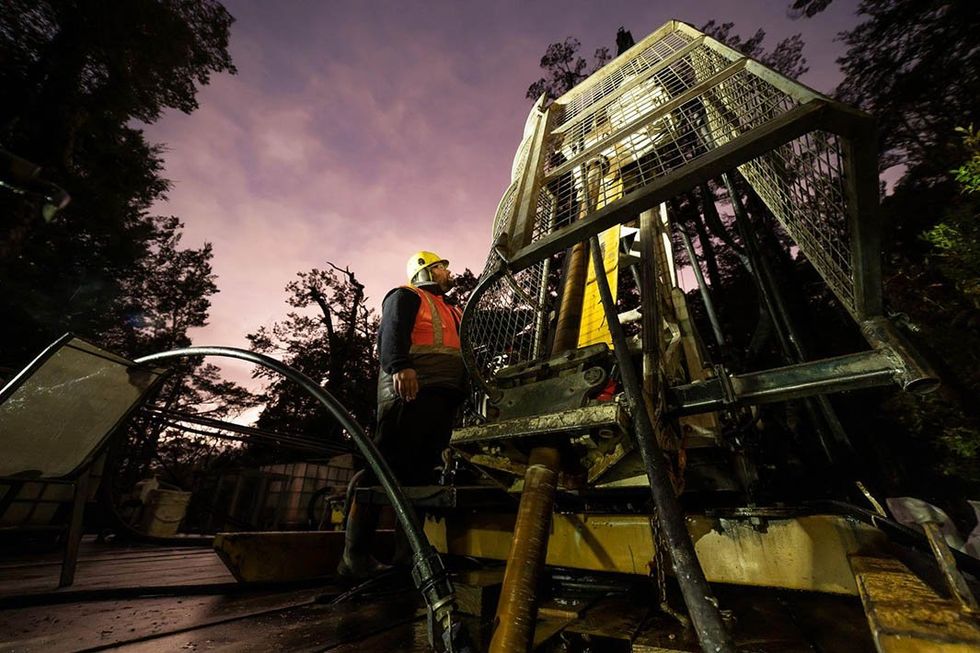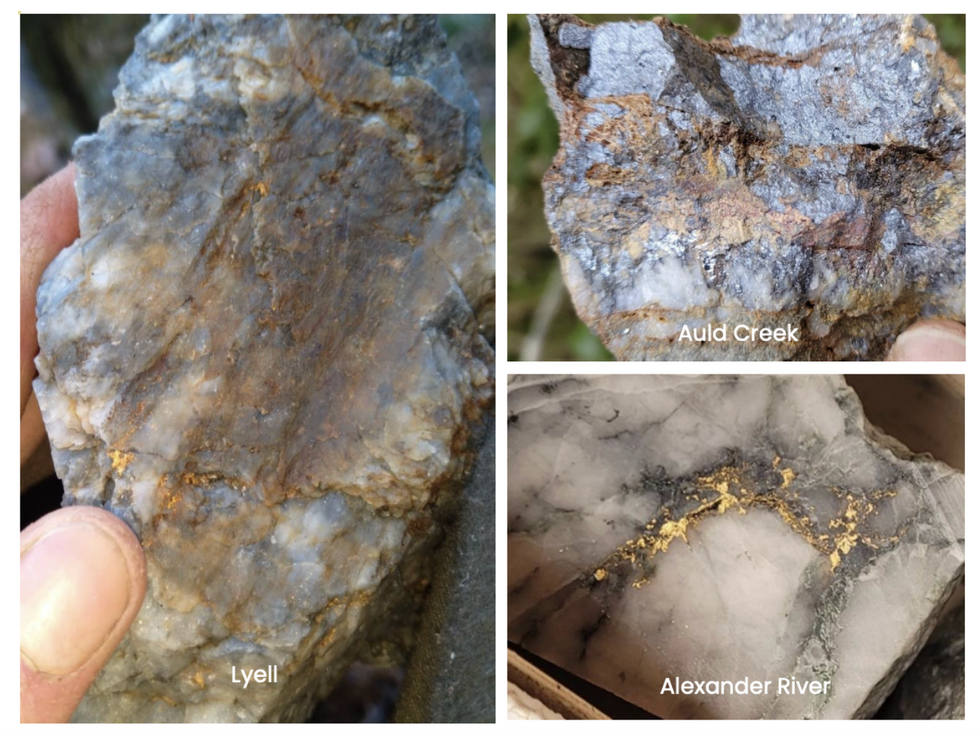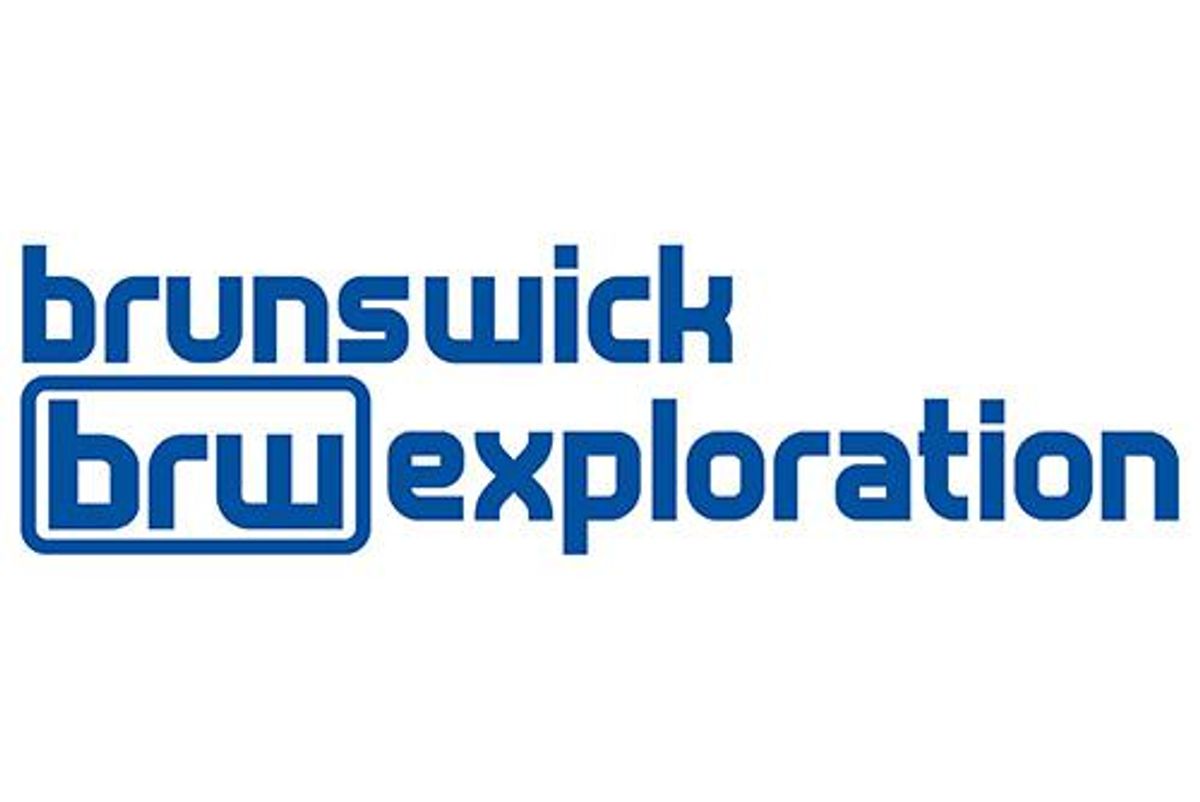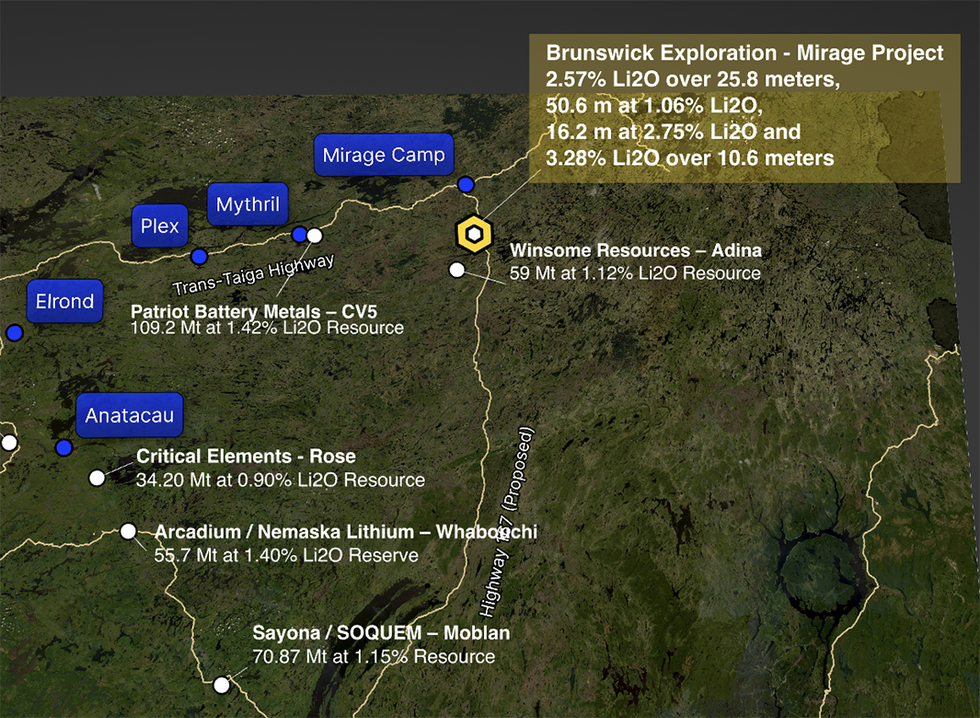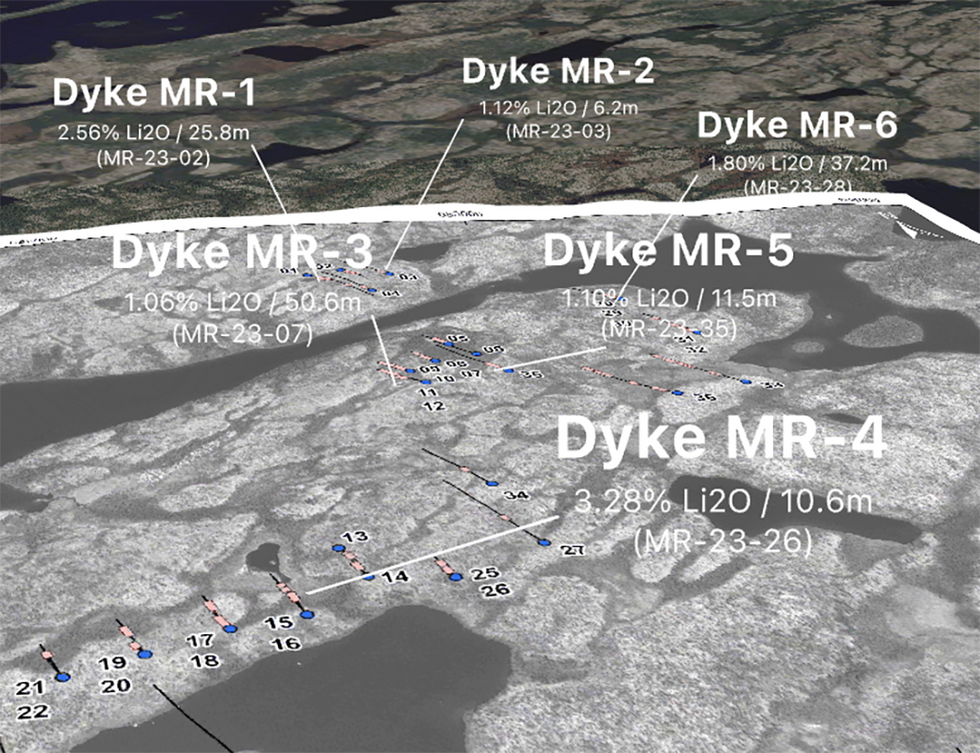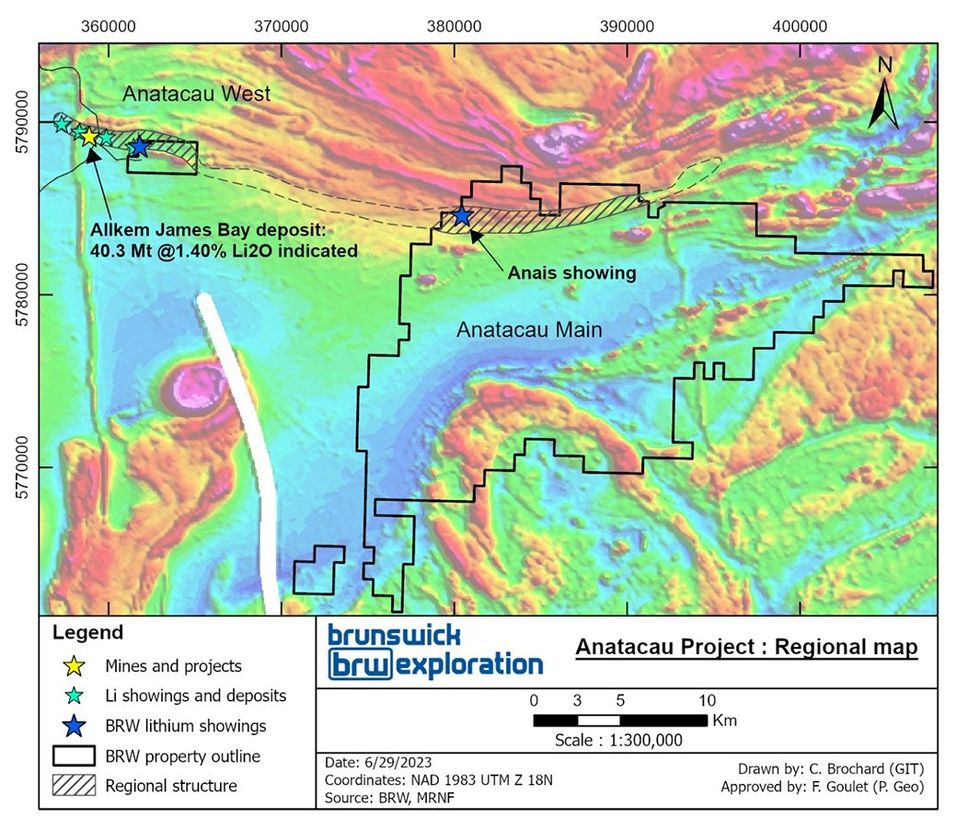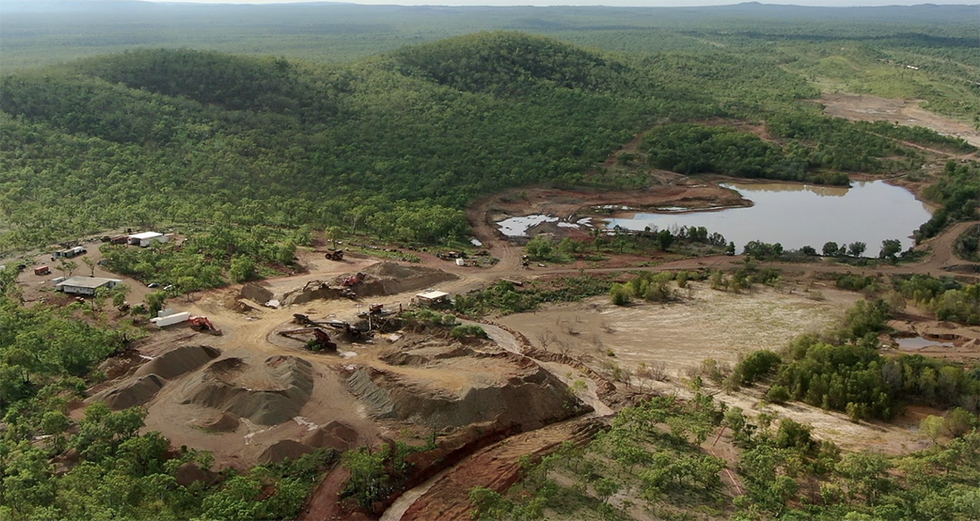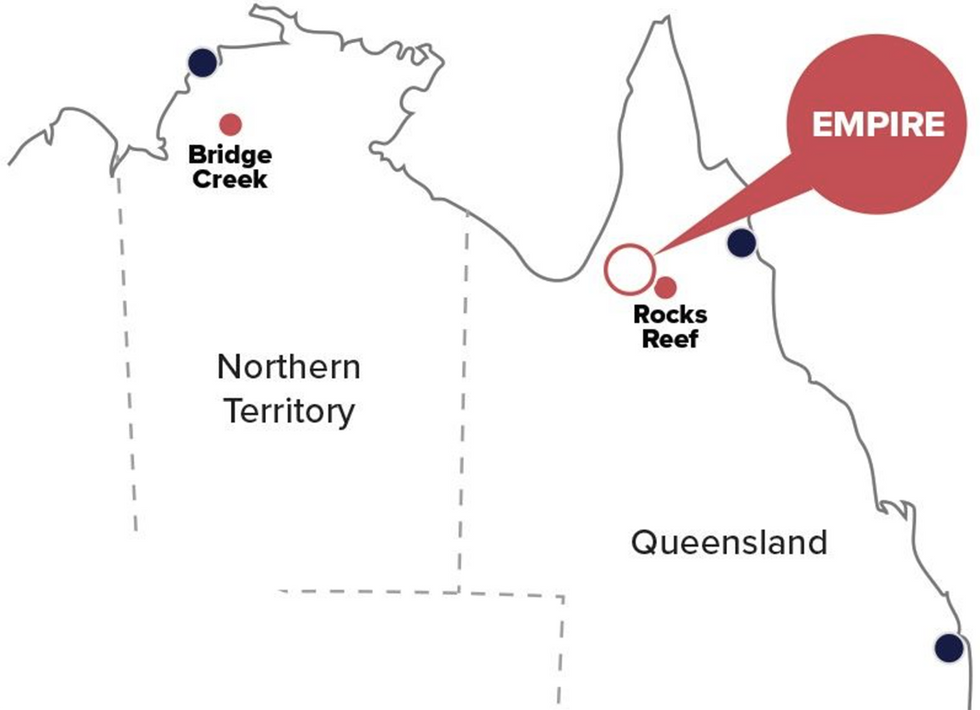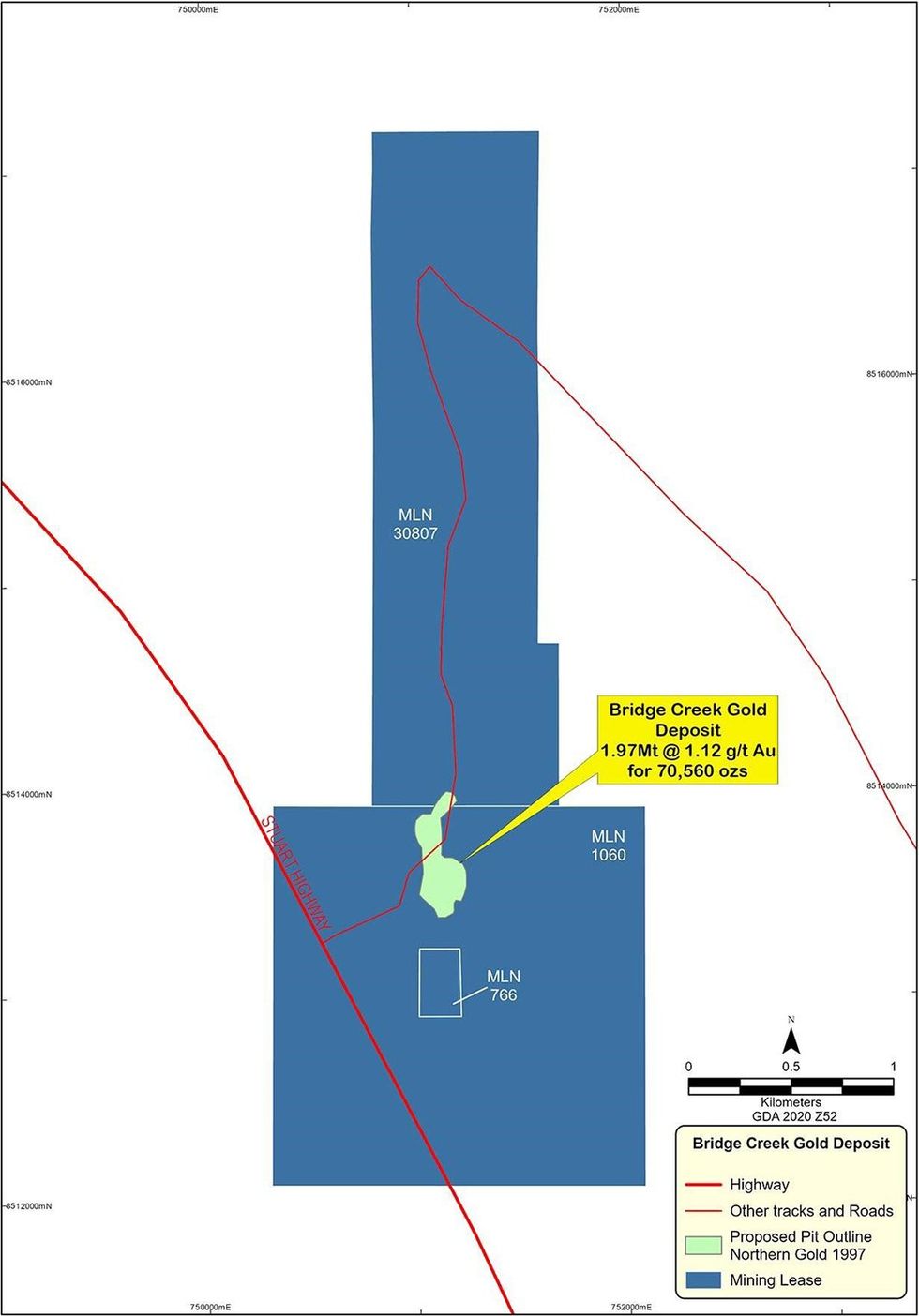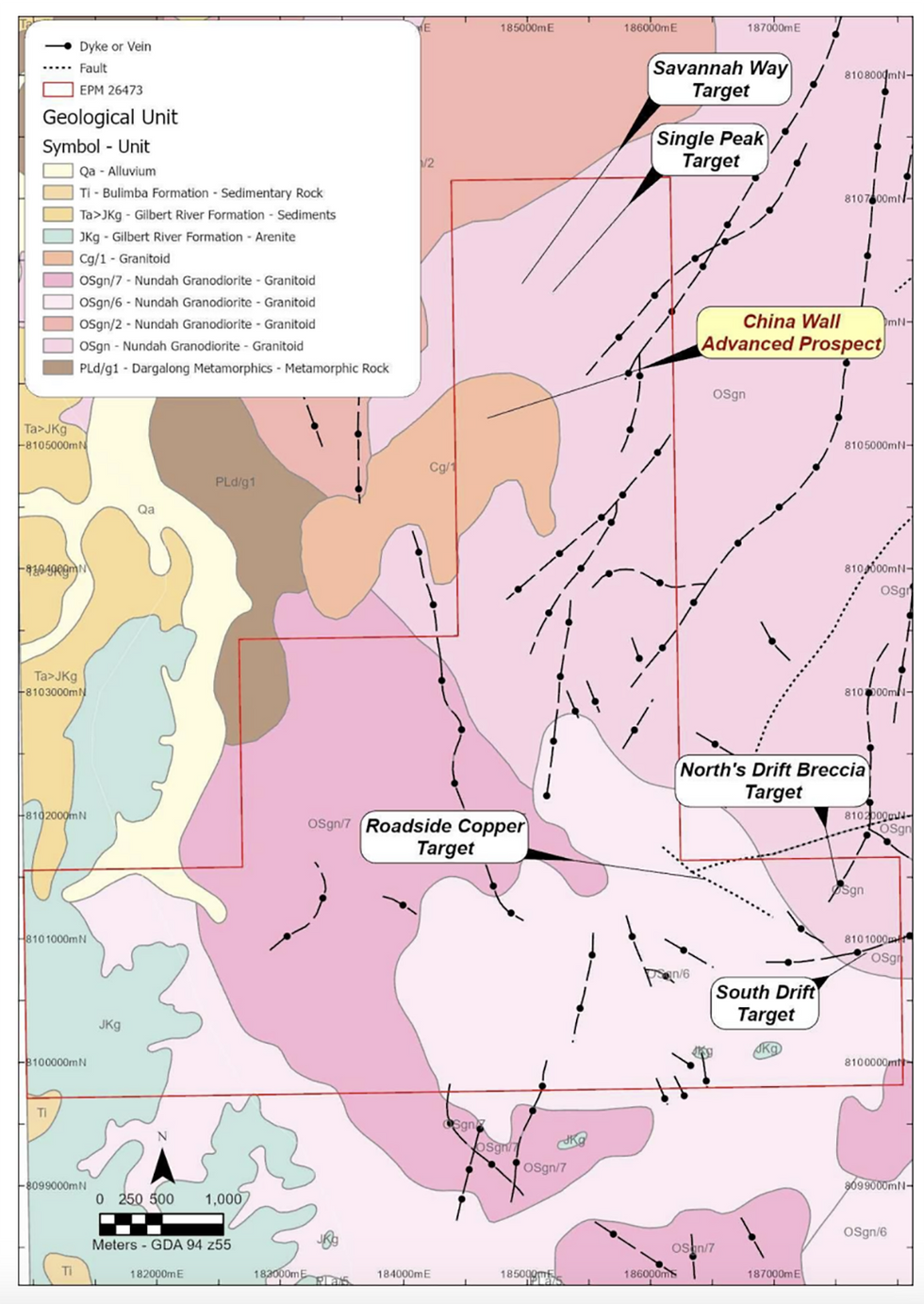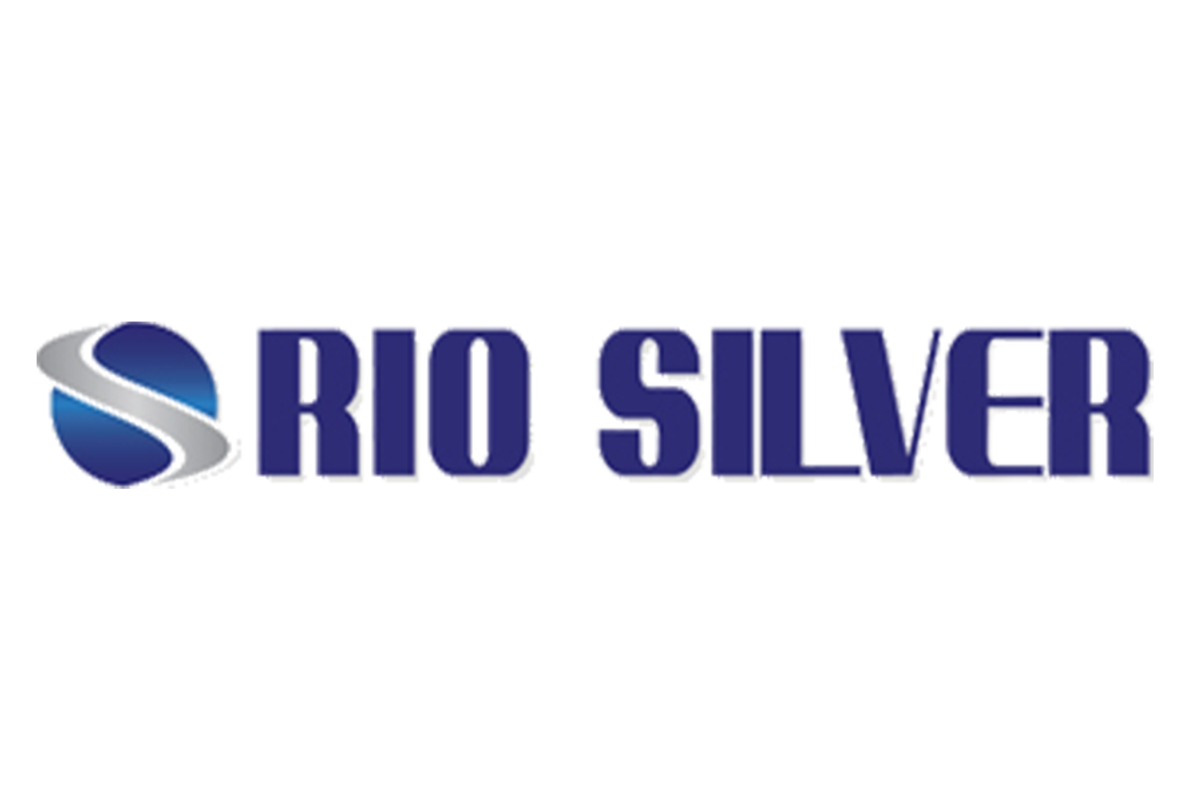Gold Prices Fuel Margin Expansion
(in U.S. dollars unless otherwise noted)
"Our diversified portfolio performed well and production for the quarter met expectations. Elevated gold prices translated directly into some of our highest ever margins," stated Paul Brink CEO. "Salares Norte commenced production during the quarter and Greenstone and Tocantinzinho are on track for first production in the coming months. Alamos' planned acquisition of Argonaut will help realize the full potential of the Magino and Island Gold deposits. While Cobre Panama remains on preservation and safe management, we are hopeful that the issues can be resolved. Franco- Nevada has no debt, $2.3B in available capital and has an active deal pipeline."
Q1 2024 | |||||
Q1 2024 results | vs | ||||
Q1 2023 | |||||
Total GEOs 1 sold | 122,897 GEOs | -15 % | |||
Precious Metal GEOs 1 sold | 93,018 GEOs | -16 % | |||
Revenue | $256.8 million | -7 % | |||
Net income | $144.5 million ($0.75/share) | -8 % | |||
Adjusted Net Income 2 | $146.0 million ($0.76/share) | -4 % | |||
Adjusted Net Income Margin 2 | 56.9 % | +3 % | |||
Adjusted EBITDA 2 | $216.1 million ($1.12/share) | -6 % | |||
Adjusted EBITDA Margin 2 | 84.2 % | +1.4 % |
Strong Financial Position
- No debt and $2.3 billion in available capital as at March 31, 2024
- Operating cash flow of $178.6 million in Q1 2024
- Quarterly dividend increased 5.88% to $0.36 /share effective Q1 2024
Sector-Leading ESG
- Rated #1 precious metals company and #1 gold company by Sustainalytics, AA by MSCI and Prime by ISS ESG
- Committed to the World Gold Council's Responsible Gold Mining Principles
- Partnering with our operators on community and ESG initiatives
- 40% diverse representation at the Board and top leadership levels as a group
Diverse, Long-Life Portfolio
- Most diverse royalty and streaming portfolio by asset, operator and country
- Attractive mix of long-life streams and high optionality royalties
- Long-life mineral resources and mineral reserves
Growth and Optionality
- Mine expansions and new mines driving 5-year growth profile
- Long-term optionality in gold, copper and nickel and exposure to some of the world's great mineral endowments
- Strong pipeline of precious metal and diversified opportunities
Quarterly revenue and GEOs sold by commodity | |||||||||||
Q1 2024 | Q1 2023 | ||||||||||
GEOs Sold | Revenue | GEOs Sold | Revenue | ||||||||
# | (in millions) | # | (in millions) | ||||||||
PRECIOUS METALS | |||||||||||
Gold | 77,563 | $ | 160.9 | 90,722 | $ | 172.2 | |||||
Silver | 11,688 | 25.0 | 14,813 | 28.6 | |||||||
PGM | 3,767 | 8.1 | 5,703 | 11.4 | |||||||
93,018 | $ | 194.0 | 111,238 | $ | 212.2 | ||||||
DIVERSIFIED | |||||||||||
Iron ore | 7,301 | $ | 14.8 | 7,074 | $ | 13.1 | |||||
Other mining assets | 1,496 | 3.0 | 1,067 | 2.0 | |||||||
Oil | 13,883 | 26.1 | 14,170 | 27.1 | |||||||
Gas | 4,865 | 12.3 | 9,118 | 16.9 | |||||||
NGL | 2,334 | 5.4 | 2,664 | 5.0 | |||||||
29,879 | $ | 61.6 | 34,093 | $ | 64.1 | ||||||
Revenue from royalty, stream and working interests | 122,897 | $ | 255.6 | 145,331 | $ | 276.3 | |||||
Interest revenue and other interest income | — | $ | 1.2 | — | $ | — | |||||
Total revenue | 122,897 | $ | 256.8 | 145,331 | $ | 276.3 | |||||
In Q1 2024, we recognized $256.8 million in revenue, down 7.1% from Q1 2023. While we benefited from the rally in gold prices during the quarter, we sold fewer GEOs than in the prior year period as Cobre Panama remains in preservation and safe management. GEOs sold during the quarter do not fully reflect production for the quarter as 3,036 GEOs from Condestable were held in inventory at March 31, 2024 and sold subsequent to quarter-end. Precious Metal revenue accounted for 75.5% of our revenue (62.7% gold, 9.7% silver, 3.1% PGM). Revenue was sourced 82.8% from the Americas (39.2% South America , 9.7% Central America & Mexico , 18.2% U.S. and 15.7% Canada ). Revenue includes interest revenue and other interest income related to loans provided as part of our financing packages. For the three months ended March 31, 2024 , we recognized $1.2 million in revenue related to the G Mining Ventures Term Loan and Skeena Convertible Debenture.
Environmental, Social and Governance (ESG) Updates
During the quarter, we published our 2024 ESG Report that, among other things, highlights our key focuses for ESG due diligence, increased community contributions, progression of diversity goals and initiatives, and the adoption of reduction targets in respect of our corporate emissions. We also renewed our partnership with Perpetua Resources to support social capacity building at the Stibnite Gold Project. In furtherance of our goal to have diversity at the Board level on grounds broader than gender diversity, we made a firm commitment to appoint a racially or ethnically diverse director by no later than our annual general shareholder meeting in 2025. We continue to rank highly with leading ESG rating agencies.
Portfolio Additions
- Financing package with Scottie Resources: Subsequent to quarter-end, on April 15, 2024 , we acquired a 2.0% gross production royalty on all minerals produced on Scottie Resources Corp.'s ("Scottie") claims in the Stewart Mining Camp in the Golden Triangle in British Columbia, Canada , for a purchase price of $5.9 million ( C$8.1 million ). Additionally, we acquired 5,422,994 common shares of Scottie for an aggregate of $0.7 million ( C$1.0 million ).
- Amendment of Condestable Stream – Peru : On March 27, 2024 , we amended our Condestable precious metal stream agreement to increase the Phase 2 variable deliveries from 25% of gold and silver produced to 37.5%, by paying an additional $10.0 million deposit.
- Acquisition of Silver Royalty on the Stibnite Gold Project – U.S. : On March 21, 2024 , we acquired a NSR interest covering all of the payable silver production from the Stibnite Gold project in Idaho for a purchase price of $8.5 million .
- Funding of G Mining Ventures Term Loan: On January 29, 2024 , we funded $42.0 million under our term loan commitment to G Mining Ventures. Subsequent to quarter-end, on April 19, 2024 , we funded the remaining $33.0 million , thereby fulfilling our term loan commitment. The term loan is part of a financing package we provided to G Mining Ventures in July 2022 in connection with the Tocantinzinho gold project, in Brazil .
- Acquisition of Royalties on Pascua-Lama Project – Chile : On January 3, 2024 , we acquired an additional interest in the Chilean portion of Barrick Gold Corporation's Pascua-Lama project for a purchase price of $6.7 million . Including the interest we acquired in August 2023 , at gold prices exceeding $800 /ounce, we now hold a 2.941% NSR (gold) and a 0.588% NSR (copper) on the property.
- Acquisition of Additional Natural Gas Royalty in the Haynesville – U.S.: As previously announced, on November 21, 2023 , we agreed to acquire a royalty portfolio in the Haynesville gas play in Louisiana and Texas for $125.0 million and funded an initial deposit of $12.5 million . The transaction closed on January 2, 2024 , and we funded the remainder of the purchase price of $112.5 million .
Q1 2024 Portfolio Updates
Precious Metal assets: GEOs sold from our Precious Metal assets were 93,018, compared to 111,238 GEOs in Q1 2023. Higher contributions from Antapaccay, Guadalupe-Palmarejo and Subika (Ahafo) were more than offset by lower deliveries from Cobre Panama and Antamina.
South America :
- Candelaria (gold and silver stream) – GEOs delivered and sold in Q1 2024 were relatively in line with Q1 2023. In February 2024 , Lundin Mining reported an overall increase in Mineral Resources at Candelaria , reflecting additional drilling at La Espanola and Santos offset by lower underground Mineral Resources due to changes to underground mining regulations.
- Antapaccay (gold and silver stream) – GEOs delivered and sold were higher in Q1 2024 compared to Q1 2023. Operations were temporarily suspended as a result of socio-political tensions in early 2023.
- Antamina (22.5% silver stream) – GEOs delivered and sold were lower in Q1 2024 compared to Q1 2023. Silver production at the mine was lower than in the prior year period due to a decrease in average silver grades as anticipated based on the life of mine plan.
- Condestable (gold and silver stream) – We received 3,036 GEOs in Q1 2024, consistent with deliveries in Q1 2023. However, ounces were sold subsequent to quarter-end and remained in inventory as at March 31, 2024 .
- Tocantinzinho (gold stream) – G Mining Ventures reported the physical construction of the Tocantinzinho project was 89% complete as of the end of March 2024 and remains on track for commercial production in H2 2024. According to the 2022 feasibility study, the project is expected to produce an average of 196,000 ounces of gold annually for the first five years.
- Salares Norte (1- 2% royalties) – Gold Fields announced that production at the Salares Norte mine started with the pouring of its first gold-silver doré on March 28, 2024 . Ramp-up of the mine to steady state production is progressing with gold equivalent production of 250,000 ounces expected for 2024. Once steady state production is reached, production is expected to increase to 580,000 gold equivalent ounces in 2025.
- Posse ( Mara Rosa ) (1% royalty) – Hochschild Mining announced that the first gold pour took place on February 20, 2024 , with commercial production expected in Q2 2024. Mara Rosa is expected to produce between 83,000 to 93,000 gold ounces in 2024 and has reported expected average annual production of approximately 80,000 gold ounces over an initial mine life of 10 years, with approximately 100,000 gold ounces annually over the first four years.
- Cascabel (1% royalty) – In February 2024 , SolGold announced the completion of a new pre-feasibility study, which outlined reduced initial capital costs and a 28-year mine plan containing 3.2 million tonnes of copper, 9.4 million ounces of gold, and 28 million ounces of silver (540 million tonnes grading 0.60% copper, 0.54 g/t gold, and 1.62 g/t silver).
Central America & Mexico :
- Cobre Panama (gold and silver stream) – Production at Cobre Panama has been halted since November 2023 with mining activities currently on preservation and safe management.
- Guadalupe-Palmarejo (50% gold stream) – GEOs sold from Guadalupe-Palmarejo increased in Q1 2024 compared to the same quarter in 2023, reflecting increased production at the mine due to better head grade and recoveries.
U.S.:
- Stillwater (5% royalty) – GEOs from our Stillwater royalty decreased in Q1 2024 compared to Q1 2023 as the decline in PGM prices more than offset higher production at the mine. Sibanye-Stillwater is repositioning its U.S. PGM operations in light of the lower palladium price environment.
- Bald Mountain (0.875-5% royalties) – GEOs from our Bald Mountain royalties were higher in Q1 2024 than in Q1 2023 due to mine sequencing.
- Marigold (0.5-5% royalties) – GEOs from our Marigold royalties were lower in Q1 2024 than in Q1 2023 as production is taking place on ground that carries a lower royalty rate. Production is anticipated to progress to higher royalty rate ground in 2027 through the end of the current mine life.
- Stibnite Gold (gold and silver royalties) – Perpetua Resources received a letter of interest from the Export-Import Bank of the United States for potential debt financing of up to $1.8 billion .
Canada :
- Detour Lake (2% royalty) – Agnico Eagle reported it expects the mill to reach a throughput of 28.0 million tonnes per annum by the end of 2024 and continues to evaluate underground mining scenarios. Agnico Eagle expects to provide an update on the project, mill optimization efforts and ongoing exploration results in Q2 2024. Exploration drilling focussed on infill drilling the West Pit Extension, west of the West Pit mineral resources and near the potential underground exploration ramp.
- Hemlo (3% royalty & 50% NPI) – GEOs from our Hemlo royalties were lower than in Q1 2023 reflecting higher underground mining costs. Barrick anticipates production at Hemlo to improve relative to 2023, where production was impacted by interruptions to the underground operations.
- Brucejack (1.2% royalty) – GEOs from our Brucejack royalty were lower in Q1 2024 than in Q1 2023. Newmont, which acquired Brucejack through its acquisition of Newcrest Mining in November 2023 , anticipates an increase in production in 2024 compared to 2023.
- Macassa ( Kirkland Lake ) (1.5-5.5% royalty & 20% NPI) – Agnico Eagle reported that commissioning of the ventilation system upgrade at Macassa was completed in Q1 2024. Production from long hole stopes in the Near Surface deposit continued in Q1 2024, and development of the AK deposit progressed for initial production in Q4 2024.
- Magino (3% royalty) and Island Gold ( 0.62% royalty) – Argonaut and Alamos announced a definitive agreement whereby Alamos will acquire all of the issued and outstanding shares of Argonaut. The combination is expected to create one of Canada's largest, lowest cost and most profitable gold mines. The transaction is expected to result in substantial synergies through shared infrastructure between the adjacent Magino and Island Gold mines. Alamos has noted potential longer-term upside through a single optimized milling complex at Magino with an expansion of between 15,000 and 20,000 tonnes per day.
- Canadian Malartic (1.5% royalty) – Agnico Eagle reported that ramp development reached the first production level of East Gouldie in February 2024 . Exploration drilling continued to return positive results to the east of the East Gouldie mineral resources, demonstrating the potential to add inferred mineral resources.
- Greenstone (3% royalty) – Equinox Gold announced that ore was introduced into the grinding circuit on April 6, 2024 , with first gold pour expected in May 2024 and commercial production targeted for Q3 2024. Equinox Gold also announced that it had entered into an agreement to consolidate its ownership interest to 100% of the Greenstone project. On a 100% basis, Greenstone is expected to produce between approximately 175,000 and 208,000 gold ounces in 2024, and average annual production of approximately 400,000 gold ounces over an initial mine life of 14 years.
- Valentine Gold (3% royalty) – Production at Valentine Gold continues to be anticipated in H1 2025. The project is now owned by Calibre Mining, which acquired Marathon Gold in January 2024 . Average annual production of approximately 195,000 gold ounces is expected, over an initial mine life of 12 years.
Rest of World:
- MWS (25% stream) – GEOs delivered and sold from our MWS stream were higher than in Q1 2023 due to higher production.
- Tasiast (2% royalty) – GEOs from our Tasiast royalty were higher than in Q1 2023 as a result of strong grades, higher recoveries and record throughput following the completion of the Tasiast 24k project.
- Subika (Ahafo) (2% royalty) – GEOs from our Subika (Ahafo) royalty were higher than in Q1 2023 as production at Subika increased due to higher open pit grade and stronger underground mining rates.
- Séguéla (0.6% royalty) – On March 30, 2024 , Fortuna Silver Mines exercised its option to buy-back 0.6% of the 1.2% NSR by paying $6.5 million ( A$10 million ) to Franco-Nevada, such that our NSR on the Séguéla mine is now 0.6%.
Diversified assets: Our Diversified assets, primarily comprising our Iron Ore and Energy interests, generated $61.6 million in revenue, down from $64.1 million in Q1 2023.
Iron Ore:
- Vale Royalty (iron ore royalty) – Revenue from the Vale royalty increased compared to Q1 2023. The increase is due to a higher than anticipated royalty payment reflecting higher attributable iron ore sales during the H2 2023 period. For the Q1 2024 period, production was in line compared to Q1 2023 in the Northern System. Higher production from the Southeastern System, where the royalty is not yet payable, was driven by increases at Itabira and Brucutu.
- LIORC – LIORC declared a cash dividend of C$0.45 per common share in the current period, compared to C$0.50 in Q1 2023. LIORC reported production at IOC for Q1 2024 of 4.5 million tonnes, up from 4.3 million tonnes in Q1 2023, and confirmed 2024 production guidance remains unchanged at 16.7 million tonnes to 19.6 million tonnes.
- Caserones (0.517% effective NSR) – GEOs from our interest in Caserones were higher than in Q1 2023. On January 19, 2024 , EMX Royalty Corp. exercised an option to acquire a portion of our interest for a sale price of $4.7 million , such that our effective NSR on Caserones is now 0.517%.
Energy:
- U.S. (various royalty rates) – Revenue from our U.S. Energy interests decreased compared to Q1 2023. While revenue from our oil assets was consistent with the prior year, overall revenues declined due to lower revenue from our gas assets. Contribution from our new Haynesville gas acquisition was offset by lower realized gas prices and volumes at our existing Haynesville assets.
- Canada (various royalty rates) – Revenue from our Canadian Energy interests was slightly lower than in Q1 2023. Higher production and revenues from our Orion asset were offset by lower revenue from the Weyburn NRI, due to prior period adjustments.
Dividend Declaration
Franco- Nevada is pleased to announce that its Board of Directors has declared a quarterly dividend of US$0.36 per share. The dividend will be paid on June 27, 2024 , to shareholders of record on June 13, 2024 (the "Record Date"). The dividend has been declared in U.S. dollars and the Canadian dollar equivalent will be determined based on the daily average rate posted by the Bank of Canada on the Record Date. Under Canadian tax legislation, Canadian resident individuals who receive "eligible dividends" are entitled to an enhanced gross-up and dividend tax credit on such dividends.
The Company has a Dividend Reinvestment Plan (the "DRIP") which allows shareholders of Franco-Nevada to reinvest dividends to purchase additional common shares at the Average Market Price, as defined in the DRIP, subject to a discount from the Average Market Price in the case of treasury acquisitions. The Company will issue additional common shares through treasury at a 1% discount to the Average Market Price. The Company may, from time to time, in its discretion, change or eliminate the discount applicable to treasury acquisitions or direct that such common shares be purchased in market acquisitions at the prevailing market price, any of which would be publicly announced. Participation in the DRIP is optional. The DRIP and enrollment forms are available on the Company's website at www.franco-nevada.com . Canadian and U.S. registered shareholders may also enroll in the DRIP online through the plan agent's self-service web portal at www.investorcentre.com/franco-nevada . Canadian and U.S. beneficial shareholders should contact their financial intermediary to arrange enrollment. Non-Canadian and non-U.S. shareholders may potentially participate in the DRIP, subject to the satisfaction of certain conditions. Non-Canadian and non-U.S. shareholders should contact the Company to determine whether they satisfy the necessary conditions to participate in the DRIP.
This press release is not an offer to sell or a solicitation of an offer for securities. A registration statement relating to the DRIP has been filed with the U.S. Securities and Exchange Commission and may be obtained under the Company's profile on the U.S. Securities and Exchange Commission's website at www.sec.gov .
Shareholder Information
The complete Condensed Consolidated Interim Financial Statements and Management's Discussion and Analysis can be found on our website at www.franco-nevada.com , on SEDAR+ at www.sedarplus.com and on EDGAR at www.sec.gov .
We will host a conference call to review our Q1 2024 results. Interested investors are invited to participate as follows:
Conference Call and Webcast: | May 2 nd 10:00 am ET |
Dial‑in Numbers: | Toll‑Free: 1‑888‑390‑0546 International: 416‑764‑8688 |
Conference Call URL (This allows participants to join | |
Webcast: | |
Replay (available until May 9 th ): | Toll‑Free: 1‑888‑390‑0541 International: 416‑764‑8677 Pass code: 644762 # |
Corporate Summary
Franco-Nevada Corporation is the leading gold-focused royalty and streaming company with the largest and most diversified portfolio of cash-flow producing assets. Its business model provides investors with gold price and exploration optionality while limiting exposure to cost inflation. Franco- Nevada is debt-free and uses its free cash flow to expand its portfolio and pay dividends. It trades under the symbol FNV on both the Toronto and New York stock exchanges.
Forward- Looking Statements
This press release contains "forward-looking information" and "forward-looking statements" within the meaning of applicable Canadian securities laws and the United States Private Securities Litigation Reform Act of 1995, respectively, which may include, but are not limited to, statements with respect to future events or future performance, management's expectations regarding Franco-Nevada's growth, results of operations, estimated future revenues, performance guidance, carrying value of assets, future dividends and requirements for additional capital, mineral resources and mineral reserves estimates, production estimates, production costs and revenue, future demand for and prices of commodities, expected mining sequences, business prospects and opportunities, the performance and plans of third party operators, audits being conducted by the Canada Revenue Agency ("CRA"), the expected exposure for current and future tax assessments and available remedies, and statements with respect to the future status and any potential restart of the Cobre Panama mine and related arbitration proceedings. In addition, statements relating to mineral resources and mineral reserves, GEOs or mine lives are forward-looking statements, as they involve implied assessment, based on certain estimates and assumptions, and no assurance can be given that the estimates and assumptions are accurate and that such mineral resources and mineral reserves, GEOs or mine lives will be realized. Such forward-looking statements reflect management's current beliefs and are based on information currently available to management. Often, but not always, forward-looking statements can be identified by the use of words such as "plans", "expects", "is expected", "budgets", "potential for", "scheduled", "estimates", "forecasts", "predicts", "projects", "intends", "targets", "aims", "anticipates" or "believes" or variations (including negative variations) of such words and phrases or may be identified by statements to the effect that certain actions "may", "could", "should", "would", "might" or "will" be taken, occur or be achieved. Forward-looking statements involve known and unknown risks, uncertainties and other factors, which may cause the actual results, performance or achievements of Franco-Nevada to be materially different from any future results, performance or achievements expressed or implied by the forward-looking statements. A number of factors could cause actual events or results to differ materially from any forward-looking statement, including, without limitation: fluctuations in the prices of the primary commodities that drive royalty and stream revenue (gold, platinum group metals, copper, nickel, uranium, silver, iron ore and oil and gas); fluctuations in the value of the Canadian and Australian dollar, Mexican peso, and any other currency in which revenue is generated, relative to the U.S. dollar; changes in national and local government legislation, including permitting and licensing regimes and taxation policies and the enforcement thereof; the adoption of a global minimum tax on corporations; regulatory, political or economic developments in any of the countries where properties in which Franco-Nevada holds a royalty, stream or other interest are located or through which they are held; risks related to the operators of the properties in which Franco-Nevada holds a royalty, stream or other interest, including changes in the ownership and control of such operators; relinquishment or sale of mineral properties; influence of macroeconomic developments; business opportunities that become available to, or are pursued by Franco-Nevada; reduced access to debt and equity capital; litigation; title, permit or license disputes related to interests on any of the properties in which Franco-Nevada holds a royalty, stream or other interest; whether or not the Company is determined to have "passive foreign investment company" ("PFIC") status as defined in Section 1297 of the United States Internal Revenue Code of 1986, as amended; potential changes in Canadian tax treatment of offshore streams; excessive cost escalation as well as development, permitting, infrastructure, operating or technical difficulties on any of the properties in which Franco-Nevada holds a royalty, stream or other interest; access to sufficient pipeline capacity; actual mineral content may differ from the mineral resources and mineral reserves contained in technical reports; rate and timing of production differences from resource estimates, other technical reports and mine plans; risks and hazards associated with the business of development and mining on any of the properties in which Franco-Nevada holds a royalty, stream or other interest, including, but not limited to unusual or unexpected geological and metallurgical conditions, slope failures or cave-ins, sinkholes, flooding and other natural disasters, terrorism, civil unrest or an outbreak of contagious disease; the impact of future pandemics; and the integration of acquired assets. The forward-looking statements contained herein are based upon assumptions management believes to be reasonable, including, without limitation: the ongoing operation of the properties in which Franco-Nevada holds a royalty, stream or other interest by the owners or operators of such properties in a manner consistent with past practice; the accuracy of public statements and disclosures made by the owners or operators of such underlying properties; no material adverse change in the market price of the commodities that underlie the asset portfolio; the Company's ongoing income and assets relating to determination of its PFIC status; no material changes to existing tax treatment; the expected application of tax laws and regulations by taxation authorities; the expected assessment and outcome of any audit by any taxation authority; no adverse development in respect of any significant property in which Franco-Nevada holds a royalty, stream or other interest; the accuracy of publicly disclosed expectations for the development of underlying properties that are not yet in production; integration of acquired assets; and the absence of any other factors that could cause actions, events or results to differ from those anticipated, estimated or intended. However, there can be no assurance that forward-looking statements will prove to be accurate, as actual results and future events could differ materially from those anticipated in such statements. Investors are cautioned that forward-looking statements are not guarantees of future performance. In addition, there can be no assurance as to (i) the outcome of the ongoing audit by the CRA or the Company's exposure as a result thereof, or (ii) the future status and any potential restart of the Cobre Panama mine or the outcome of any related arbitration proceedings. Franco- Nevada cannot assure investors that actual results will be consistent with these forward-looking statements. Accordingly, investors should not place undue reliance on forward-looking statements due to the inherent uncertainty therein.
For additional information with respect to risks, uncertainties and assumptions, please refer to Franco-Nevada's most recent Annual Information Form as well as Franco-Nevada's most recent Management's Discussion and Analysis filed with the Canadian securities regulatory authorities on www.sedarplus.com and Franco-Nevada's most recent Annual Report filed on Form 40-F filed with the SEC on www.sec.gov . The forward-looking statements herein are made as of the date hereof only and Franco-Nevada does not assume any obligation to update or revise them to reflect new information, estimates or opinions, future events or results or otherwise, except as required by applicable law.
ENDNOTES:
- GEOs: Gold equivalent ounces ("GEOs") include Franco-Nevada's attributable share of production from our Mining and Energy assets after applicable recovery and payability factors. GEOs are estimated on a gross basis for NSRs and, in the case of stream ounces, before the payment of the per ounce contractual price paid by the Company. For NPI royalties, GEOs are calculated taking into account the NPI economics. Silver, platinum, palladium, iron ore, oil, gas and other commodities are converted to GEOs by dividing associated revenue, which includes settlement adjustments, by the relevant gold price. The price used in the computation of GEOs varies depending on the royalty or stream agreement of each particular asset, which may make reference to the market price realized by the operator, or the average price for the month, quarter, or year in which the commodity was produced or sold. For Q1 2024, the average commodity prices were as follows: $2,072 /oz gold (Q1 2023 - $1,889 ), $23.36 /oz silver (Q1 2023 - $22.56 ), $910 /oz platinum (Q1 2023 - $994 ) and $978 /oz palladium (Q1 2023 - $1,567 ), $126 /t Fe 62% CFR China (Q1 2023 - $124 ), $76.96 /bbl WTI oil (Q1 2023 - $76.13 ) and $2.09 /mcf Henry Hub natural gas (Q1 2023 - $2.76 ).
- NON-GAAP FINANCIAL MEASURES: Adjusted Net Income and Adjusted Net Income per share, Adjusted Net Income Margin, Adjusted EBITDA and Adjusted EBITDA per share, and Adjusted EBITDA Margin are non-GAAP financial measures with no standardized meaning under International Financial Reporting Standards ("IFRS Accounting Standards") and might not be comparable to similar financial measures disclosed by other issuers. For a quantitative reconciliation of each non-GAAP financial measure to the most directly comparable financial measure under IFRS Accounting Standards, refer to the following tables. Further information relating to these Non-GAAP financial measures is incorporated by reference from the "Non-GAAP Financial Measures" section of Franco-Nevada's MD&A for the three months ended March 31, 2024 dated May 1, 2024 filed with the Canadian securities regulatory authorities on SEDAR+ available at www.sedarplus.com and with the U.S. Securities and Exchange Commission available on EDGAR at www.sec.gov .
- Adjusted Net Income and Adjusted Net Income per share are non-GAAP financial measures, which exclude the following from net income and earnings per share ("EPS"): impairment losses and reversal related to royalty, stream and working interests and investments; gains/losses on disposals of royalty, stream and working interests and investments; impairment losses and expected credit losses related to investments, loans receivable and other financial instruments, changes in fair value of investments, loans receivable and other financial instruments, foreign exchange gains/losses and other income/expenses; unusual non-recurring items; and the impact of income taxes on these items.
- Adjusted Net Income Margin is a non-GAAP financial measure which is defined by the Company as Adjusted Net Income divided by revenue.
- Adjusted EBITDA and Adjusted EBITDA per share are non-GAAP financial measures, which exclude the following from net income and EPS: income tax expense/recovery; finance expenses and finance income; depletion and depreciation; impairment charges and reversals related to royalty, stream and working interests and investments; gains/losses on disposals of royalty, stream and working interests and investments; impairment losses and expected credit losses related to investments, loans receivable and other financial instruments, changes in fair value of investment, loans receivable and other financial instruments, foreign exchange gains/losses and other income/expenses; and unusual non-recurring items.
- Adjusted EBITDA Margin is a non-GAAP financial measure which is defined by the Company as Adjusted EBITDA divided by revenue.
Reconciliation of Non-GAAP Financial Measures:
For the three months ended | ||||||||
March 31, | ||||||||
(expressed in millions, except per share amounts) | 2024 | 2023 | ||||||
Net income | $ | 144.5 | $ | 156.5 | ||||
Gain on disposal of royalty interests | (0.3) | (3.7) | ||||||
Foreign exchange loss (gain) and other expenses (income) | 1.6 | (2.2) | ||||||
Tax effect of adjustments | 0.2 | 1.6 | ||||||
Adjusted Net Income | $ | 146.0 | $ | 152.2 | ||||
Basic weighted average shares outstanding | 192.2 | 191.9 | ||||||
Adjusted Net Income per share | $ | 0.76 | $ | 0.79 | ||||
For the three months ended | ||||||||
March 31, | ||||||||
(expressed in millions, except Adjusted Net Income Margin) | 2024 | 2023 | ||||||
Adjusted Net Income | $ | 146.0 | $ | 152.2 | ||||
Revenue | 256.8 | 276.3 | ||||||
Adjusted Net Income Margin | 56.9 | % | 55.1 | % | ||||
For the three months ended | ||||||||||
March 31, | ||||||||||
(expressed in millions, except per share amounts) | 2024 | 2023 | ||||||||
Net income | $ | 144.5 | $ | 156.5 | ||||||
Income tax expense | 27.5 | 27.6 | ||||||||
Finance expenses | 0.6 | 0.7 | ||||||||
Finance income | (16.0) | (10.5) | ||||||||
Depletion and depreciation | 58.2 | 61.0 | ||||||||
Gain on disposal of royalty interests | (0.3) | (3.7) | ||||||||
Foreign exchange loss (gain) and other expenses (income) | 1.6 | (2.2) | ||||||||
Adjusted EBITDA | $ | 216.1 | $ | 229.4 | ||||||
Basic weighted average shares outstanding | 192.2 | 191.9 | ||||||||
Adjusted EBITDA per share | $ | 1.12 | $ | 1.20 | ||||||
For the three months ended | |||||||||
March 31, | |||||||||
(expressed in millions, except Adjusted EBITDA Margin) | 2024 | 2023 | |||||||
Adjusted EBITDA | $ | 216.1 | $ | 229.4 | |||||
Revenue | 256.8 | 276.3 | |||||||
Adjusted EBITDA Margin | 84.2 | % | 83.0 | % | |||||
FRANCO- NEVADA CORPORATION
CONDENSED CONSOLIDATED STATEMENTS OF FINANCIAL POSITION
(in millions of U.S. dollars)
At March 31, | At December 31, | |||||||
2024 | 2023 | |||||||
ASSETS | ||||||||
Cash and Cash equivalents | $ | 1,352.0 | $ | 1,421.9 | ||||
Receivables | 126.7 | 111.0 | ||||||
Gold bullion, prepaid expenses and other current assets | 91.5 | 82.4 | ||||||
Current assets | $ | 1,570.2 | $ | 1,615.3 | ||||
Royalty, stream and working interests, net | $ | 4,078.7 | $ | 4,027.1 | ||||
Investments | 257.2 | 254.5 | ||||||
Loans receivable | 65.4 | 24.8 | ||||||
Deferred income tax assets | 35.1 | 37.0 | ||||||
Other assets | 52.7 | 35.4 | ||||||
Total assets | $ | 6,059.3 | $ | 5,994.1 | ||||
LIABILITIES | ||||||||
Accounts payable and accrued liabilities | $ | 41.8 | $ | 30.9 | ||||
Current income tax liabilities | 11.6 | 8.3 | ||||||
Current liabilities | $ | 53.4 | $ | 39.2 | ||||
Deferred income tax liabilities | $ | 181.6 | $ | 180.1 | ||||
Other liabilities | 4.8 | 5.7 | ||||||
Total liabilities | $ | 239.8 | $ | 225.0 | ||||
SHAREHOLDERS' EQUITY | ||||||||
Share capital | $ | 5,742.2 | $ | 5,728.2 | ||||
Contributed surplus | 19.3 | 20.6 | ||||||
Retained earnings | 283.7 | 212.3 | ||||||
Accumulated other comprehensive loss | (225.7) | (192.0) | ||||||
Total shareholders' equity | $ | 5,819.5 | $ | 5,769.1 | ||||
Total liabilities and shareholders' equity | $ | 6,059.3 | $ | 5,994.1 | ||||
The unaudited condensed consolidated interim financial statements and accompanying notes can be found in our Q1 2024 Quarterly Report available on our website |
FRANCO- NEVADA CORPORATION
CONDENSED CONSOLIDATED STATEMENTS OF INCOME AND COMPREHENSIVE (LOSS) INCOME
(in millions of U.S. dollars and shares, except per share amounts)
For the three months ended | |||||||
March 31, | |||||||
2024 | 2023 | ||||||
Revenue | |||||||
Revenue from royalty, streams and working interests | $ | 255.6 | $ | 276.3 | |||
Interest revenue | 0.9 | — | |||||
Other interest income | 0.3 | — | |||||
Total revenue | $ | 256.8 | $ | 276.3 | |||
Costs of sales | |||||||
Costs of sales | $ | 33.6 | $ | 38.2 | |||
Depletion and depreciation | 58.2 | 61.0 | |||||
Total costs of sales | $ | 91.8 | $ | 99.2 | |||
Gross profit | $ | 165.0 | $ | 177.1 | |||
Other operating expenses (income) | |||||||
General and administrative expenses | $ | 5.7 | $ | 6.2 | |||
Share-based compensation expenses | 2.8 | 3.2 | |||||
Gain on disposal of royalty interests | (0.3) | (3.7) | |||||
Gain on sale of gold bullion | (1.4) | (0.7) | |||||
Total other operating expenses | $ | 6.8 | $ | 5.0 | |||
Operating income | $ | 158.2 | $ | 172.1 | |||
Foreign exchange (loss) gain and other (expenses) income | $ | (1.6) | $ | 2.2 | |||
Income before finance items and income taxes | $ | 156.6 | $ | 174.3 | |||
Finance items | |||||||
Finance income | $ | 16.0 | $ | 10.5 | |||
Finance expenses | (0.6) | (0.7) | |||||
Net income before income taxes | $ | 172.0 | $ | 184.1 | |||
Income tax expense | 27.5 | 27.6 | |||||
Net income | $ | 144.5 | $ | 156.5 | |||
Other comprehensive (loss) income, net of taxes | |||||||
Items that may be reclassified subsequently to profit and loss: | |||||||
Currency translation adjustment | $ | (39.2) | $ | (0.4) | |||
Items that will not be reclassified subsequently to profit and loss: | |||||||
Gain on changes in the fair value of equity investments | |||||||
at fair value through other comprehensive income ("FVTOCI"), | |||||||
net of income tax | 1.8 | 6.8 | |||||
Other comprehensive (loss) income, net of taxes | $ | (37.4) | $ | 6.4 | |||
Comprehensive income | $ | 107.1 | $ | 162.9 | |||
Earnings per share | |||||||
Basic | $ | 0.75 | $ | 0.82 | |||
Diluted | $ | 0.75 | $ | 0.81 | |||
Weighted average number of shares outstanding | |||||||
Basic | 192.2 | 191.9 | |||||
Diluted | 192.4 | 192.2 | |||||
The unaudited condensed consolidated interim financial statements and accompanying notes can be found in our Q1 2024 Quarterly Report available on our website |
FRANCO- NEVADA CORPORATION
CONDENSE CONSOLIDATED STATEMENTS OF CASH FLOWS
(in millions of U.S. dollars)
For the three months ended | ||||||||
March 31, | ||||||||
2024 | 2023 | |||||||
Cash flows from operating activities | ||||||||
Net income | $ | 144.5 | $ | 156.5 | ||||
Adjustments to reconcile net income to net cash provided by operating activities: | ||||||||
Interest revenue | (0.9) | — | ||||||
Other interest income | (0.3) | — | ||||||
Depletion and depreciation | 58.2 | 61.0 | ||||||
Share-based compensation expenses | 1.4 | 1.5 | ||||||
Gain on disposal of royalty interests | (0.3) | (3.7) | ||||||
Unrealized foreign exchange loss (gain) | 1.1 | (2.1) | ||||||
Deferred income tax expense | 5.4 | 8.1 | ||||||
Other non-cash items | (0.8) | (0.7) | ||||||
Acquisition of gold bullion | (15.9) | (4.8) | ||||||
Proceeds from sale of gold bullion | 10.7 | 8.5 | ||||||
Changes in other assets | (17.4) | — | ||||||
Operating cash flows before changes in non-cash working capital | $ | 185.7 | $ | 224.3 | ||||
Changes in non-cash working capital: | ||||||||
Increase in receivables | $ | (15.7) | $ | (16.1) | ||||
Decrease in prepaid expenses and other | 0.7 | 2.1 | ||||||
Increase (decrease) in current liabilities | 7.9 | (0.5) | ||||||
Net cash provided by operating activities | $ | 178.6 | $ | 209.8 | ||||
Cash flows used in investing activities | ||||||||
Acquisition of royalty, stream and working interests | $ | (146.9) | $ | (109.3) | ||||
Investment in loan receivable | (41.2) | — | ||||||
Acquisition of investments | (6.7) | — | ||||||
Acquisition of energy well equipment | (0.3) | (0.3) | ||||||
Acquisition of property and equipment | (0.1) | — | ||||||
Proceeds from sale of royalty interests | 4.7 | 7.0 | ||||||
Net cash used in investing activities | $ | (190.5) | $ | (102.6) | ||||
Cash flows used in financing activities | ||||||||
Payment of dividends | $ | (58.9) | $ | (57.8) | ||||
Proceeds from exercise of stock options | 0.8 | 1.2 | ||||||
Net cash used in financing activities | $ | (58.1) | $ | (56.6) | ||||
Effect of exchange rate changes on cash and cash equivalents | $ | 0.1 | $ | 1.3 | ||||
Net change in cash and cash equivalents | $ | (69.9) | $ | 51.9 | ||||
Cash and cash equivalents at beginning of period | $ | 1,421.9 | $ | 1,196.5 | ||||
Cash and cash equivalents at end of period | $ | 1,352.0 | $ | 1,248.4 | ||||
Supplemental cash flow information: | ||||||||
Income taxes paid | $ | 7.4 | $ | 23.9 | ||||
Dividend income received | $ | 2.1 | $ | 3.9 | ||||
Interest and standby fees paid | $ | 0.4 | $ | 0.6 | ||||
The unaudited condensed consolidated interim financial statements and accompanying notes can be found in our Q1 2024 Quarterly Report available on our website |
![]() View original content: https://www.prnewswire.com/news-releases/franco-nevada-reports-q1-2024-results-302133634.html
View original content: https://www.prnewswire.com/news-releases/franco-nevada-reports-q1-2024-results-302133634.html
SOURCE Franco-Nevada Corporation

![]() View original content: http://www.newswire.ca/en/releases/archive/May2024/01/c1560.html
View original content: http://www.newswire.ca/en/releases/archive/May2024/01/c1560.html

 Figure 1. Top of the South Island, geology showing Palaeozoic rocks in green. Adapted fromCooper and Tulloch 1992.
Figure 1. Top of the South Island, geology showing Palaeozoic rocks in green. Adapted fromCooper and Tulloch 1992. Figure 2. Geology of the Sams Creek deposit.
Figure 2. Geology of the Sams Creek deposit.
